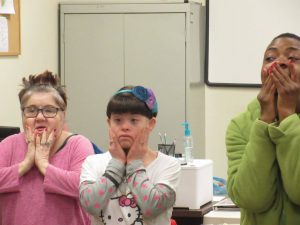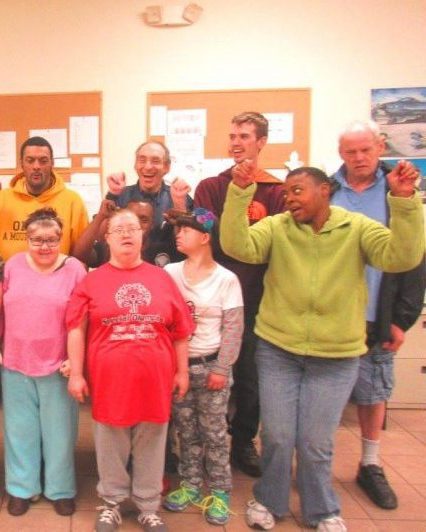On Wednesday, March 30th, an improve class was held at DCI, led by Andrew Nelson from Marshall University, and Emily Stotler. During this class, participants took part in a variety of games and exercises encouraging teamwork and diverse ways of thinking through movement and expression.
The first game consumers took part in was called “Bang Bang.” “Bang Bang” was a name game in which everybody stood in a circle. This was simply a warm-up to help everyone loosen up, and get to know one another. One person in the middle of the circle would point at another person and say their name. If a person’s name was called, they would have to duck quickly, and the two people on either side of them would have to point at one another saying “Bang Bang.” Whoever said “Bang Bang” last would jump in the middle and say the next person’s name.
The next exercise was called “Statues,” in which one person would be the “sculptor” and the other the “statue.” The sculptor would “mold” the statue, by moving parts of his or her body to reflect a certain situation. Then everybody  else in the group would guess what the situation was. This game helped consumers build different types of characters through communication and trust.
else in the group would guess what the situation was. This game helped consumers build different types of characters through communication and trust.
“Liar Liar” was the next game, in which two people would take turns asking one another what they were doing. Player 1 would ask Player 2 “What are you doing?” and Player 2 would answer with a lie. Player 1 would then have to act out whatever Player 2 said. Player 2 would then ask Player 1, and vice-versa. During this game, consumers had a lot of fun simply being creative and spontaneous. Consumers then took part in a storytelling exercise. One person would stand with their arms behind their back and tell a story. A second person would stand behind them using their arms to help convey what the other person was saying.
Consumers then took part in a storytelling exercise. One person would stand with their arms behind their back and  tell a story. A second person would stand behind them using their arms to help convey what the other person was saying.
tell a story. A second person would stand behind them using their arms to help convey what the other person was saying.
The last game was called “The Machine.” This game required everybody in the group. The first person would do any type of movement their heart desired. The
next person would then add their own movement, and so on and so on until everybody in the group was contributing to “The Machine.” This game encouraged the importance of teamwork and reminded consumers that everyone’s role was important to make “The Machine” work.
The class ended with Emily playing her guitar and singing a couple of songs. A few clients took turns playing the guitar afterwards. All participants seemed to enjoy themselves as evidenced by the thunderous laughter during the activities.
